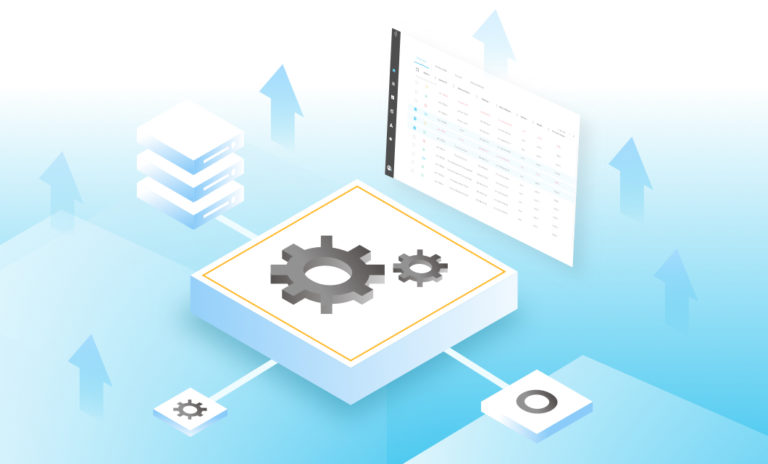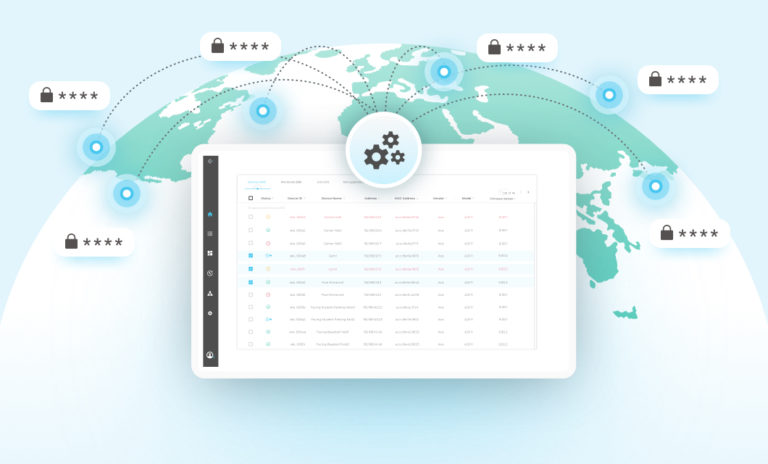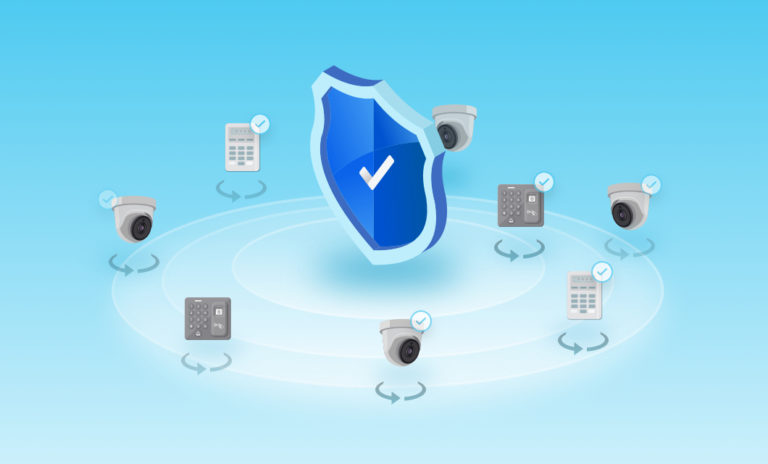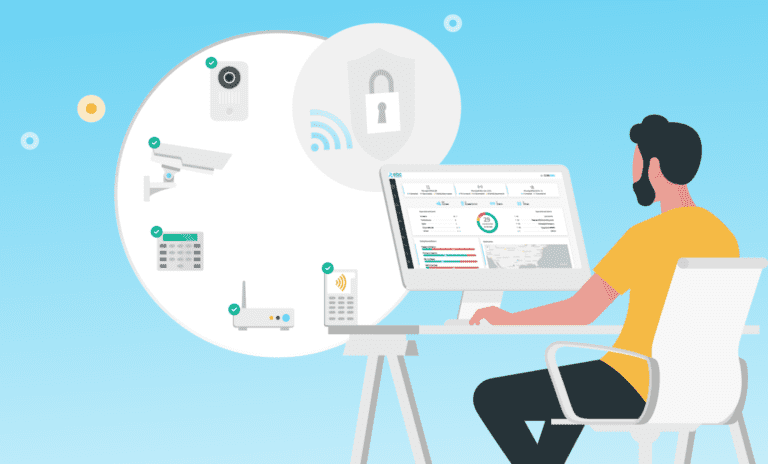
The April 28, 2025 power outage across Spain, Portugal, and southern France left 55 million people without electricity for up to 18 hours, revealing critical infrastructure vulnerabilities. This unprecedented blackout disrupted hospitals, transportation, and banking systems, demonstrating how natural physical security threats can instantly cripple regional operations. Organizations should learn from this catastrophic event to improve their resilience against similar threats.
This article examines five key lessons from Europe’s blackout and provides specific, actionable strategies to strengthen your security infrastructure. You’ll discover practical approaches to protect your systems from power-related vulnerabilities and maintain critical functions during extended outages.
April 2025 European Power Blackout
Timeline of the April 2025 Blackout
On April 28, 2025, at approximately 12:15 PM CET, the first signs of grid instability appeared across northeastern Spain. Within 27 minutes, cascading failures had spread throughout the Iberian transmission network, ultimately affecting 55 million people across Spain, Portugal, and parts of southern France.
The outage affected approximately 85% of the Iberian Peninsula’s electrical infrastructure, making it the most extensive European power failure since the 2006 European blackout.
Major cities including Madrid, Barcelona, Lisbon, and Toulouse completely lost power by 2:00 PM. Local emergency generators activated in critical facilities, but many exhausted their fuel reserves by midnight as the outage continued. Full restoration took up to 18 hours in remote regions, with the last areas regaining power around 6:00 AM on April 29.
Root Causes and Technical Failures
According to preliminary findings from the European Network of Transmission System Operators for Electricity (ENTSO-E), the blackout stemmed from two major disconnection events that resulted in the sudden loss of 15 gigawatts of power. Investigators point to failures in the high-voltage interconnections between France and Spain as the initial trigger.
The escalating frequency of extreme weather events across Europe has placed unprecedented stress on aging power transmission infrastructure never designed for such conditions.
While authorities ruled out cyberattacks, the investigation revealed that several key transmission substations lacked adequate protection against voltage fluctuations. The rapid growth of renewable energy integration has also created new stability challenges that traditional grid management systems struggled to handle during the crisis.
Immediate Impact on Essential Services
- Healthcare facilities: Hospitals in Barcelona reported that 23% of backup generators failed to activate properly, compromising patient care in critical departments.
- Transportation networks: All metro systems in affected cities shut down immediately, stranding thousands underground. Air traffic control relied on emergency systems, forcing the cancellation of 1,240 flights across the region.
- Security systems: Approximately 68% of networked surveillance cameras went offline after their uninterruptible power supplies (UPS) depleted, creating security gaps at critical facilities.
- Financial systems: ATM networks failed completely, while point-of-sale systems collapsed once battery backups drained, forcing businesses to return to manual transaction processing.
Local authorities struggled to coordinate emergency responses as communication networks degraded, highlighting how interconnected modern infrastructure magnifies the impact of natural physical security threats.
3 Critical Vulnerabilities Exposed by Natural Physical Security Threats
The Iberian blackout laid bare significant security system weaknesses that many organizations had previously overlooked.
Power Grid Interconnection Weaknesses
The April 2025 crisis revealed how excessive dependence on centralized power distribution creates single points of failure. The European power grid’s interconnected nature, while efficient under normal conditions, magnified the initial failure across borders with frightening speed.
Most critical security infrastructure lacks adequate protection against cascading power failures.
Following power failures across Barcelona’s financial district, a significant majority of buildings lost access control capabilities within 90 minutes, despite having battery backups supposedly rated for several hours of operation.
The problem stemmed from energy consumption patterns that differed significantly from manufacturers’ specifications. Security cameras, access controllers, and alarm panels operating at higher power draws during emergency mode depleted battery reserves faster than expected. Interconnected systems meant that when one component failed, it triggered failures in others—a vulnerability rarely addressed in security planning.
Backup Power Inadequacies
The extended duration of the blackout exposed critical shortcomings in backup power systems. Many organizations discovered their generators and UPS systems were inadequate for sustained outages.
Testing revealed that many backup power systems had not been load-tested at full capacity, with fuel reserves calculated for theoretical rather than actual consumption rates.
Communication System Breakdowns
Security teams faced severe challenges when communication networks degraded, hampering coordination and response efforts. Cellular networks remained operational for only 4-6 hours before widespread tower failures occurred.
Radio systems that security teams relied on faced unexpected interference as buildings switched to emergency power, creating dead zones where guards couldn’t communicate.
The most successful organizations had previously established clear protocols for communication degradation, including predetermined meeting points and manual check-in procedures when electronic systems failed.
Implementing Resilient Security Infrastructure
The Iberian blackout highlighted that robust physical security systems must maintain functionality even when primary power sources fail. Building resilience requires thoughtful architecture that anticipates and mitigates the effects of extended power outages.
Distributed Power Sources for Critical Systems
Relying solely on centralized power generation creates dangerous single points of failure for security infrastructure. Organizations that maintained security operations during the recent blackout typically employed distributed power approaches.
Facilities with on-site renewable generation coupled with storage maintain critical security functions significantly longer than those dependent solely on grid power.
The key lies in dedicated circuits that isolate security systems from general power loads, ensuring that limited emergency power resources prioritize critical security functions rather than non-essential services.
Redundancy Planning for Security Components
During the blackout, organizations with redundant security components experienced significantly fewer security incidents. Redundancy requires more than duplicating equipment—it demands architectural diversity.
When Barcelona International Airport lost power, their layered approach to redundancy allowed security operations to continue at substantial capacity while neighboring facilities operated at much lower levels.
Effective redundancy planning requires calculating mean time between failures for all components and implementing overlapping systems with different failure modes. For example, pairing network-based access control with standalone offline controllers ensures continuous operation when network infrastructure fails.
Organizations should also maintain mechanical backup systems for truly critical areas. During the outage, facilities that maintained conventional locks alongside electronic access control retained security integrity throughout the crisis.
Automated Failover Protocols
The speed and effectiveness of switching to backup systems proved crucial during the Iberian power crisis. Organizations with predefined, automated failover protocols maintained security operations with minimal disruption.
Graceful Degradation
The practice of designing systems to maintain core functionality during partial failures by automatically prioritizing essential services and temporarily suspending non-critical functions.
Implementing effective failover requires following these key steps:
- Define priority zones: Map your facility into security tiers with descending importance levels, ensuring power resources flow to the most critical areas first.
- Establish power thresholds: Create specific trigger points that activate predetermined responses based on power availability.
- Automate load shedding: Configure systems to automatically disable high-energy security components in sequence when power reserves decline.
- Test transition timing: Measure and optimize the speed of transition between primary and backup systems under realistic conditions.
- Document manual overrides: Create clear protocols for security personnel to manually activate backup systems if automation fails.
Government security agencies suggest that facilities conducting regular tests of their failover protocols experience fewer security breaches during actual power disruptions compared to those testing less frequently.
Proactive Solutions for Mitigating Natural Physical Security Threats
Real-Time Monitoring and Alert Systems
When power fluctuations began across Spain, organizations with advanced monitoring capabilities detected early warning signs before complete failure occurred. This critical time advantage allowed security teams to activate contingency plans and preserve core functions.
During the April 2025 blackout, facilities using real-time monitoring detected power anomalies an average of 17 minutes before complete failure, providing crucial preparation time.
Modern monitoring platforms continuously track power quality, network performance, and device status across distributed security infrastructure. These systems can identify trends that precede failures and trigger automated responses based on predefined thresholds.
Automated Maintenance for Critical Infrastructure
Regular maintenance significantly impacts how security systems perform during crises. Organizations that automated their maintenance processes showed markedly better resilience during the blackout.
Manual maintenance routines often fail to keep pace with modern security system complexity, creating hidden vulnerabilities that appear only during crisis situations.
Automated maintenance platforms handle critical tasks including firmware updates, security patches, password rotation, and performance monitoring. These systems ensure devices remain in optimal condition to withstand abnormal conditions and recover properly when power returns.
Physical Security Enhancements for Data Centers
Data centers represent particularly critical infrastructure during power outages, as they maintain digital services essential for coordinating emergency responses. The most resilient facilities during the Iberian crisis employed layered physical protection strategies.
Defense in Depth
A physical security approach that employs multiple protective mechanisms working in concert rather than relying on a single barrier or system.
Successful data centers maintained security integrity through methods including biometric access systems with local authentication capabilities, overlapping surveillance coverage with battery-isolated cameras, and security personnel equipped with independent communication tools.
Centralized Device Management Platforms
Organizations using centralized management platforms for their physical security devices demonstrated superior response capabilities during the outage. These platforms provide a unified view of device health, enabling rapid assessment and targeted intervention.
| Management Approach | Response Time | Recovery Rate | Security Continuity |
| Siloed Systems | 45-60 minutes | 67% after 8 hours | Multiple security gaps |
| Partially Integrated | 20-30 minutes | 82% after 8 hours | Limited functionality maintained |
| Fully Centralized | 5-15 minutes | 94% after 8 hours | Core security functions preserved |
Centralized management solutions reduce response times significantly during critical incidents while improving recovery rates through automated remediation workflows.
These platforms maintain local caching of critical configuration data, enabling devices to continue functioning even when cloud connectivity is lost. They also facilitate rapid status assessment when power returns, helping security teams prioritize recovery efforts based on actual impact rather than assumptions.
Building a More Resilient Future Against Natural Physical Security Threats
Organizations that successfully managed this crisis shared several key features: distributed power systems, backup redundancies with mechanical alternatives, and management platforms that maintained local operations during network failures. These organizations implemented resilience not as theoretical planning but as practical necessity, regularly testing systems under authentic failure conditions.
True security resilience isn’t measured during normal operations—it reveals itself only when systems are pushed to their breaking point by events like the Iberian blackout.
Get a free system evaluation to discover how our physical security device management platform can help your organization maintain critical security functions during unexpected outages while automating the maintenance that keeps your systems resilient against the next inevitable crisis.
FAQs
How do natural physical security threats differ from cyber threats?
Natural physical security threats such as power outages impact actual infrastructure and can knock out electronic security systems regardless of how well-protected they are against cyber attacks. While cyber threats target information systems through digital weaknesses, natural physical security threats compromise physical entry points, camera systems, and alarm networks by cutting off their power or damaging their hardware components. This fundamental difference requires entirely separate protection approaches centered on backup systems, alternative power sources, and non-electronic fallback options.
What backup power solutions best protect against natural physical security threats?
Multiple smaller power generation systems combined with dedicated storage units provide better protection than single large generators. Security systems powered by on-site solar panels connected to dedicated battery banks have shown excellent performance during extended blackouts, as seen when several banks maintained security operations throughout the Iberian power failure. For maximum effectiveness, security systems should run on separate electrical circuits that ensure critical security functions receive power before less essential facility systems.
How frequently should organizations test their resilience against natural physical security threats?
Full system testing under artificial outage conditions should happen at least quarterly for essential facilities. These tests must include complete shutdown scenarios running 12+ hours to spot battery failures, communication breakdowns, and access control problems that only emerge during longer outages. Additionally, organizations should test individual backup components monthly to catch maintenance issues early, before they compromise the entire security infrastructure.
What physical security components typically fail first during extended power outages?
Network-connected security cameras usually fail first when network equipment runs out of battery power, typically 2-4 hours after an outage begins. Following this, access control systems requiring central authentication start malfunctioning as communication systems go down, then alarm systems drain their batteries quickly when running in emergency mode. Environmental monitors that regulate temperature and humidity in critical areas like server rooms often receive lower backup power priority, leading to additional failures when conditions become too extreme for equipment operation.





